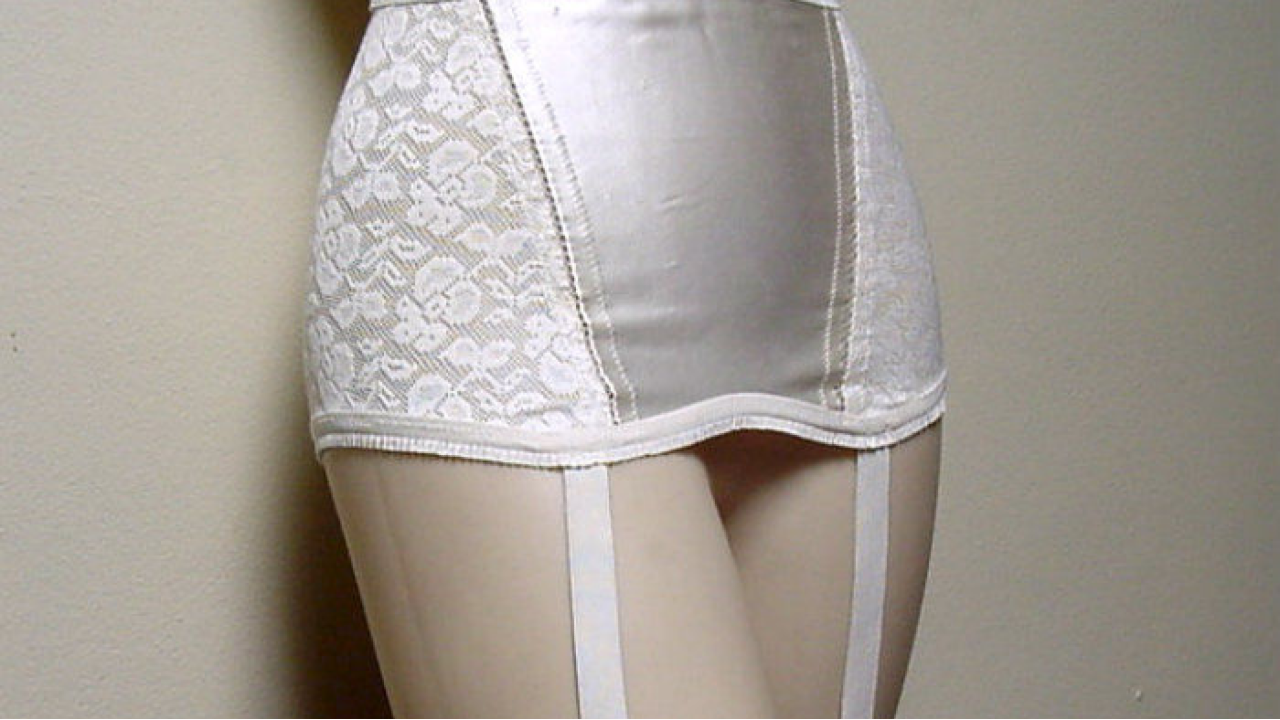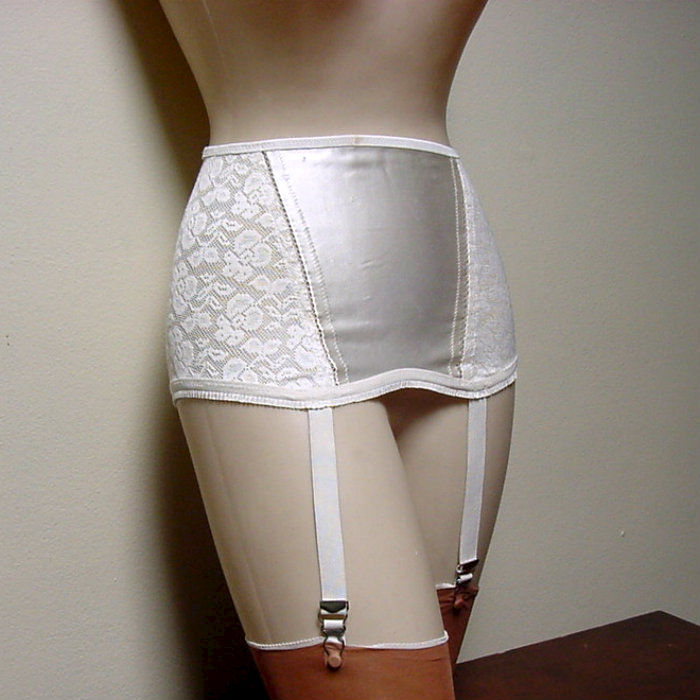AllVintageStyles
Vintage fashion encyclopedia
Garter Belt


A vintage garter belt is an undergarment with attached clips designed to hold up stockings, essential foundation wear from the 1940s-1960s before pantyhose became widespread, representing the era's approach to proper feminine presentation and intimate apparel construction.
Quick Facts
- Era: 1940s-1960s (peak necessity 1945-1965)
- Origin: United States/Europe (foundation garment manufacturers)
- Garment Type: Undergarment for securing stockings
- Key Identifiers: Elastic waistband, adjustable garter clips, silk or satin construction
- Typical Resale Price: $25-$100 (authentic vintage pieces)
- Best For: Authentic vintage styling, historical accuracy, and foundation wear collectors
History & Evolution
The vintage garter belt reached its peak necessity during the 1940s and 1950s when stockings were essential elements of proper feminine dress but pantyhose had not yet been invented. These undergarments provided the practical function of securing seamed stockings while maintaining the smooth silhouettes required by the era's fitted fashions and professional dress codes.
During the prosperous 1950s, garter belts evolved from purely functional items to decorative foundation wear featuring quality materials like silk, satin, and lace that reflected the decade's emphasis on feminine luxury and attention to intimate apparel details. The garments became symbols of proper feminine presentation and the elaborate undergarment systems required for authentic period styling.
Quality vintage garter belts featured superior construction with adjustable clips, reinforced attachment points, and materials designed for daily wear and frequent washing. The invention and widespread adoption of pantyhose in the mid-1960s made garter belts largely obsolete for everyday wear. Today, authentic vintage pieces are prized by foundation wear collectors and vintage enthusiasts requiring historical accuracy for period clothing.
Authentication Tips
Authentic Vintage Features:
- Quality construction with substantial elastic and reinforced seams
- Metal or hard plastic garter clips with proper spring tension
- Period-appropriate materials including silk, satin, or quality cotton
- Vintage foundation wear brand labels from established lingerie manufacturers
- Hand-finished details and construction methods typical of mid-century intimate apparel
Common Reproductions/Modern Pieces:
- Lightweight construction with cheap elastic that lacks vintage durability
- Poor quality clips that don't maintain proper tension for stocking support
- Modern synthetic materials or construction methods not available in vintage production
- Contemporary sizing systems that don't match vintage foundation wear measurements
- Costume-quality construction designed for temporary wear rather than functional use
Styling & Use Cases
- Best for authentic vintage styling: Essential foundation for proper stocking support under 1940s-1960s vintage clothing requiring seamed hosiery
- Ideal for historical accuracy: Necessary undergarment for period reenactment and authentic vintage fashion presentation
- Perfect for foundation wear collecting: Represents essential element of mid-century women's intimate apparel and dress requirements
Modern styling tips:
- Use with vintage-inspired seamed stockings for special occasions requiring authentic period styling
- Essential for proper fit and appearance when wearing authentic vintage clothing that demands period-appropriate foundation garments
- Consider comfort and practicality when incorporating into contemporary vintage-inspired styling
FAQ
Q: How can I tell if a garter belt is authentic vintage?
A: Look for quality construction with substantial elastic, metal or hard plastic clips with proper tension, period-appropriate materials, vintage brand labels, and hand-finished details. Authentic pieces show construction typical of mid-century foundation wear.
Q: What's the typical price range for vintage garter belts?
A: Authentic vintage garter belts range from $25-$100 depending on brand, material quality, and condition. Well-preserved examples from established lingerie manufacturers command higher prices among foundation wear collectors.
Q: How should I care for a vintage garter belt?
A: Hand wash gently in cold water with appropriate detergents, air dry to preserve elastic and avoid heat damage, and store flat to prevent stretching of vintage elastic components.
Q: What makes vintage garter belts valuable to collectors?
A: Their essential role in authentic 1940s-1960s styling, superior construction quality compared to modern alternatives, representation of pre-pantyhose feminine fashion requirements, and historical significance in the evolution of women's foundation wear and intimate apparel construction.
📷: Pretty Sweet Vintage
